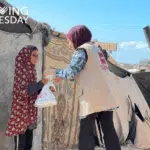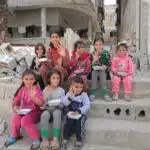
In 2024, Yemen experienced severe flooding that affected 19 governorates, impacting over 400,000 people and severely disrupting the lives of 63,195 households. The floods, which took place from April to August, added to Yemen’s ongoing humanitarian struggles, particularly in Internally Displaced Persons (IDP) camps. The hardest-hit areas include Hajjah, Al Hudaydah, Marib, Taiz, Sa’adah, Al Jawf, and Dhamar, where homes, farms, and essential infrastructure were destroyed, increasing the vulnerability of already displaced communities.
The Impact
-
Infrastructure Damage: The floods destroyed more than 17,093 shelters and homes and caused extensive damage to schools and health centers, including key hospitals like Al Thawrah in Al Hudaydah. This has left many without shelter, disrupted education, and put additional strain on an already fragile healthcare system.
-
Health Crisis: Contaminated water sources have led to a rise in cholera and other waterborne diseases, especially in overcrowded IDP camps. Children under five are particularly at risk as suspected cholera cases surge.
-
Food Security: The flooding wiped out farmland and livestock, threatening food security and leaving many families without their primary source of income. This has increased dependence on humanitarian aid, particularly in the worst-affected regions.
-
Education Disruption: With over 2 million children already out of school, the floods have worsened the education crisis. The destruction of schools and economic hardship has forced many families to focus on survival, putting education on hold.
UMR’s Response and Call to Action
UMR, working with partners, has been at the forefront of responding to this disaster. Efforts include distributing essential non-food items, hygiene kits, food parcels, and providing emergency health services at five centers managed by UMR. Despite the ongoing conflict and damaged infrastructure, UMR is dedicated to delivering critical aid to the people who need it most.
Help Now







